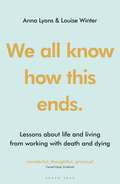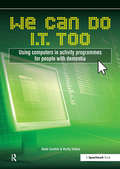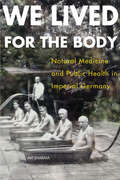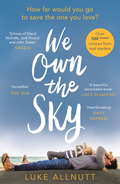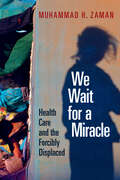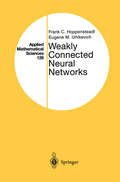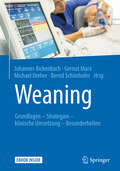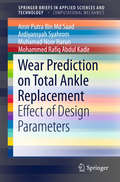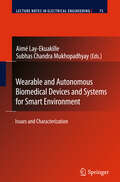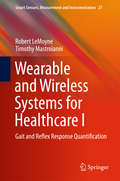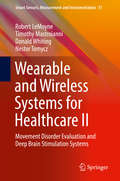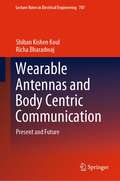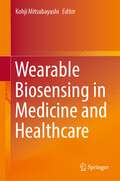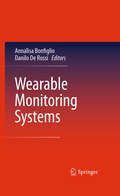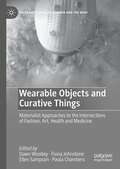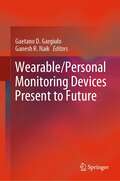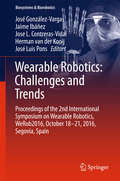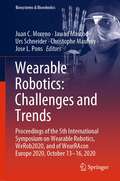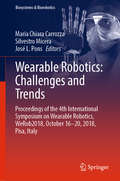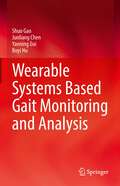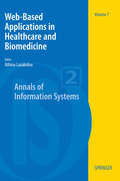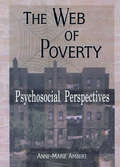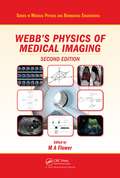- Table View
- List View
We all know how this ends: Lessons about life and living from working with death and dying
by Anna Lyons Louise Winter'Wonderful, thoughtful, practical' - Cariad Lloyd, Griefcast'Encouraging and inspiring' - Dr Kathryn Mannix, author of Amazon bestseller With The End in MindEnd-of-life doula Anna Lyons and funeral director Louise Winter have joined forces to share a collection of the heartbreaking, surprising and uplifting stories of the ordinary and extraordinary lives they encounter every single day. From working with the living, the dying, the dead and the grieving, Anna and Louise reveal the lessons they've learned about life, death, love and loss. Together they've created a profound but practical guide to rethinking the one thing that's guaranteed to happen to us all. We are all going to die, and that's ok. Let's talk about it. This is a book about life and living, as much as it's a book about death and dying. It's a reflection on the beauties, blessings and tragedies of life, the exquisite agony and ecstasy of being alive, and the fragility of everything we hold dear. It's as simple and as complicated as that.
We Can Do I.T. Too: Using Computers in Activity Programmes for People with Dementia
by Verity Stokes Nada SavitchUsing computers as part of activity programmes for people with dementia. Many people feel that computers and people with dementia don't mix. However computers and other digital gadgets such as cameras and phones are part of our lives and so it is important that people with dementia engage with these IT driven activities. This book demystifies the use of computers and other information technologies and provides a multitude of ideas and case-studies demonstrating how IT can be used effectively. Using computers in a variety of ways with people with dementia is extremely rewarding and benefits individuals, staff and family members. Based on real experiences this book is designed to inspire people working in any dementia service. It discusses why this is important, the multitude of uses and the practicalities of introducing I.T. activities. Recording people's lives - digital life story books; diary making things - calendars; photo albums; reminders helping with conversations - word finding; topics communicating with friends (email; Skype, social networking/discussion forums); helping with planning - personal planning; care plans; using services. It is suitable for care workers and managers, occupational and speech language therapists, specialist activity works and volunteers working people's homes, in day care, voluntary organisations or care homes.
We Lived for the Body: Natural Medicine and Public Health in Imperial Germany
by Avi SharmaNature was central to the Wilhelmine German experience. Medical cosmologies and reform-initiatives were a key to consumer practices and lifestyle choices. Nature's appeal transcended class, confession, and political party. Millions of Germans recognized that nature had healing effects and was intimately tied to quality of life. In the 1880s and 1890s, this preoccupation with nature became an increasingly important part of German popular culture.In this pioneering study, Avi Sharma shows that nature, health, and the body became essential ways of talking about real and imagined social and political problems. The practice of popular medicine in the Wilhelmine era brought nature back into urban everyday experience, transforming the everyday lives of ordinary citizens. Sharma explores the history of natural healing in Germany and shows how social and medical practices that now seem foreign to contemporary eyes were, just decades ago, familiar to everyone from small children to their aged grandparents, from tradesmen and women to research scientists. Natural healing was not simply a way to cure illness. It was also seen as a way to build a more healthful society. Using interpretive methods drawn from the history of science and science studies, Sharma provides a readable and groundbreaking inquiry into how popular health and hygiene movements shaped German ideas about progress, modernity, nature, health, and the body at the end of the 19th and the beginning of the 20th century.
We Own The Sky: A heartbreaking page turner that will stay with you forever
by Luke AllnuttHow far would you go to save the one you love?"Anyone who wishes David Nicholls would write faster needs to grab this with both hands." Jill MansellAn emotional page-turner with a heart-pounding dilemma. Fans of Jodi Picoult, David Nicholls and Jojo Moyes will love We Own The Sky.Anna and Rob were the perfect couple with their whole lives in front of them. When beautiful baby boy Jack came along, their world seemed complete.But when tragedy strikes they are faced with an impossible choice. They have one chance to save their child, but at what cost?"...a touching narrative of first love and fatherhood" The Sunday Times****Praise for We Own The Sky'A beautiful, hugely emotional story.' - The Sun'A heartbreaking read about love and loss.' - Bella Magazine'Prepare to have your heart wrenched by this emotion-drenched story.' - Sunday Mirror'This tender depiction of a father's love for his son is utterly heartbreaking and will stay with you long after the book has finished.' - The Express'Deeply affecting. A beautiful, remarkable book.' - Lucy Diamond, author of The Secrets of HappinessUtterly beautiful, heartbreaking and ultimately uplifting. - Rachael Lucas, author of The State of GraceWhat an incredible book this is - such gut-wrenching honesty and depth of emotion. Anyone who wishes David Nicholls would write faster needs to grab this with both hands. It's a truly stunning achievement. - Jill MansellBeautifully rendered and profoundly moving, We Own the Sky illustrates the lengths we'll go to for those we love. Luke Allnutt is a major new talent in fiction and his debut is not to be missed. - Camille Pagán, bestselling author of Life and Other Near-Death Experiences*****What readers are saying about We Own The Sky:'Prepare to weep - I defy anyone to read this and not have a tear in their eye.' reviewer, 5 stars Emotional and moving. - 5* review, AmazonThis is a truly beautiful story told from the heart and written with such great feeling. - 5* review, AmazonI loved this book for its honesty, it's rawness and for its abundance of pure love. It made me laugh, it made me cry, and it will, I know, stay with me for a very long time. - 5* review, Amazon
Weakly Connected Neural Networks (Applied Mathematical Sciences #126)
by Frank C. Hoppensteadt Eugene M. IzhikevichDevoted to local and global analysis of weakly connected systems with applications to neurosciences, this book uses bifurcation theory and canonical models as the major tools of analysis. It presents a systematic and well motivated development of both weakly connected system theory and mathematical neuroscience, addressing bifurcations in neuron and brain dynamics, synaptic organisations of the brain, and the nature of neural codes. The authors present classical results together with the most recent developments in the field, making this a useful reference for researchers and graduate students in various branches of mathematical neuroscience.
Weaning: Grundlagen - Strategien - klinische Umsetzung - Besonderheiten
by Johannes Bickenbach Gernot Marx Michael Dreher Bernd SchönhoferIn diesem Werk beschreibt ein interdisziplinäres Herausgeber- und Autorenteam die Grundlagen, Strategien und Besonderheiten der Beatmungsentwöhnung („Weaning“). Das Buch wendet sich an alle Berufsgruppen, die Patienten im Weaningprozess betreuen, wie Intensivmediziner, Pneumologen, Pflegekräfte, Physiotherapeuten und Atmungstherapeuten. Dargestellt werden Ursachen, Pathophysiologie und Therapie des Weaningversagens, ebenso wie die Besonderheiten der Beatmungsentwöhnung bei Multimorbidität und bei Infektionen mit multiresistenten Erregern. Informationen zum Aufbau und Ausbau von Weaningstationen sowie zu Qualitätsmanagement und Zertifizierungskonzepten liefern wertvolles „Know-How“ für die Implementierung oder Weiterentwicklung einer Weaningstation. Auch ethische Aspekte am Lebensende von beatmeten Patienten werden ausführlich behandelt - ebenso wie telemedizinische Aspekte beim Weaning, die außerklinische Beatmung, neue Beatmungsverfahren sowie neue Verfahren der Bildgebung. Vor allem die Ausführungen zu wichtigen Weaningstrategien nehmen Bezug auf die S2k-Leitlinie zum prolongierten Weaning. Ein praxisnahes Werk mit zahlreichen Tipps und Fallbeispielen.
Wear Prediction on Total Ankle Replacement: Effect of Design Parameters (SpringerBriefs in Applied Sciences and Technology)
by Amir Putra Saad Ardiyansyah Syahrom Muhamad Noor Harun Mohammed Rafiq KadirThis book develops and analyses computational wear simulations of the total ankle replacement for the stance phase of gait cycle. The emphasis is put on the relevant design parameters. The book presents a model consisting of three components; tibial, bearing and talar representing their physiological functions.
Wearable and Autonomous Biomedical Devices and Systems for Smart Environment: Issues and Characterization (Lecture Notes in Electrical Engineering #75)
by Aimé Lay-EkuakilleThis book is dedicated to wearable and autonomous systems, including devices, offers to variety of users, namely, master degree students, researchers and practitioners, An opportunity of a dedicated and a deep approach in order to improve their knowledge in this specific field. The book draws the attention about interesting aspects, as for instance, advanced wearable sensors for enabling applications, solutions for arthritic patients in their limited and conditioned movements, wearable gate analysis, energy harvesting, physiological parameter monitoring, communication, pathology detection , etc..
Wearable and Wireless Systems for Healthcare I: Gait and Reflex Response Quantification (Smart Sensors, Measurement and Instrumentation #27)
by Robert LeMoyne Timothy MastroianniThis book provides visionary perspective and interpretation regarding the role of wearable and wireless systems for the domain of gait and reflex response quantification. These observations are brought together in their application to smartphones and other portable media devices to quantify gait and reflex response in the context of machine learning for diagnostic classification and integration with the Internet of things and cloud computing. The perspective of this book is from the first-in-the-world application of these devices, as in smartphones, for quantifying gait and reflex response, to the current state of the art. Dr. LeMoyne has published multiple groundbreaking applications using smartphones and portable media devices to quantify gait and reflex response.
Wearable and Wireless Systems for Healthcare II: Movement Disorder Evaluation and Deep Brain Stimulation Systems (Smart Sensors, Measurement and Instrumentation #31)
by Robert LeMoyne Timothy Mastroianni Donald Whiting Nestor TomyczThis book provides a far-sighted perspective on the role of wearable and wireless systems for movement disorder evaluation, such as Parkinson’s disease and Essential tremor. These observations are brought together in the application of quantified feedback for deep brain stimulation systems using the wireless accelerometer and gyroscope of a smartphone to determine tuning efficacy. The perspective of the book ranges from the pioneering application of these devices, such as the smartphone, for quantifying Parkinson’s disease and Essential tremor characteristics, to the current state of the art. Dr. LeMoyne has published multiple first-of-their-kind applications using smartphones to quantify movement disorder, with associated extrapolation to portable media devices.
Wearable Antennas and Body Centric Communication: Present and Future (Lecture Notes in Electrical Engineering #787)
by Shiban Kishen Koul Richa BharadwajThis book presents state-of-the-art technologies, trends and applications with a focus on the healthcare domain for ultra-wideband (3.1–10.6 GHz) and 60 GHz (57–66 GHz) wireless communication systems. Due to various key features such as miniaturized antenna design, low power, high data rate, less effects on the human body, relatively less crowded spectrum, these technologies are becoming popular in various fields of biomedical applications and day-to-day life. The book highlights various aspects of these technologies related to body-centric communication, including antenna design requirements, channel modeling and characterization for WBANs, current fabrication and antenna design strategies for textile, flexible and implanted antennas. Apart from the general requirements and study related to these frequency bands, various application specific topics such as localization and tracking, physical activity recognition and assessment, vital sign monitoring and medical imaging are covered in detail. The book concludes with the glimpses of future aspects of the UWB and 60 GHz technology which includes IoT for healthcare and smart living, novel antenna materials and application of machine learning algorithms for overall performance enhancement.
Wearable Biosensing in Medicine and Healthcare
by Kohji MitsubayashiThis book contains chapters on wearable biomedical sensors and their assistive technologies for promoting behavioral change in medical and health care. Part I reviews several wearable biomedical sensors based on biocompatible materials and nano and micro-electromechanical systems (MEMS) technologies in the medical and dental fields. Part II introduces the latest approaches to wearable biosensing using unique devices for various skin targets such as sweat, interstitial fluid, and transcutaneous gases. Part III presents technologies supporting wearable sensors, including soft and flexible materials, manufacturing methods, skin volatile-marker imaging, and energy harvesting devices.This book is intended for graduate students, academic researchers, and professors that work in medical and healthcare research fields, as well as industry professionals involved in the development of wearable and flexible sensing devices and measurement systems for human bio/chemical sensing, medical monitoring, and healthcare services, and for medical professionals and government officials who are driving behavior change in health care.
Wearable Monitoring Systems
by Annalisa Bonfiglio and Danilo De RossiAs diverse as tomorrow’s society constituent groups may be, they will share the common requirements that their life should become safer and healthier, offering higher levels of effectiveness, communication and personal freedom. The key common part to all potential solutions fulfilling these requirements is wearable embedded systems, with longer periods of autonomy, offering wider functionality, more communication possibilities and increased computational power. As electronic and information systems on the human body, their role is to collect relevant physiological information, and to interface between humans and local and/or global information systems. Within this context, there is an increasing need for applications in diverse fields, from health to rescue to sport and even remote activities in space, to have real-time access to vital signs and other behavioral parameters for personalized healthcare, rescue operation planning, etc. This book’s coverage will span all scientific and technological areas that define wearable monitoring systems, including sensors, signal processing, energy, system integration, communications, and user interfaces. Six case studies will be used to illustrate the principles and practices introduced.
Wearable Objects and Curative Things: Materialist Approaches to the Intersections of Fashion, Art, Health and Medicine (Palgrave Studies in Fashion and the Body)
by Dawn Woolley Fiona Johnstone Ellen Sampson Paula ChambersThis book explores the intersections between wearable objects and human health, with particular emphasis on how artists and designers are creatively responding to and rethinking these relations. Addressing a rich range of wearable artefacts, from mobility aids and prosthetics to clothing and accessories to digital health tracking devices, its themes include care and cure; wellness culture and the commoditization of health; and the complex interactions between (human) bodies and (non-human) objects. With a theoretical framework inspired by the work of materialist thinkers including Sherry Turkle, Bruno Latour and Jane Bennett, and bringing the disciplinary fields of fashion studies, art and design practice, and medical and health humanities into dialogue for the first time, this volume draws attention to the complex agencies entangled in the things we wear, and situates fashion and art in relation to broader cultural and historical contexts of health, illness and disability.
Wearable/Personal Monitoring Devices Present to Future
by Gaetano D. Gargiulo Ganesh R. NaikThis book discusses recent advances in wearable technologies and personal monitoring devices, covering topics such as skin contact-based wearables (electrodes), non-contact wearables, the Internet of things (IoT), and signal processing for wearable devices. Although it chiefly focuses on wearable devices and provides comprehensive descriptions of all the core principles of personal monitoring devices, the book also features a section on devices that are embedded in smart appliances/furniture, e.g. chairs, which, despite their limitations, have taken the concept of unobtrusiveness to the next level. Wearable and personal devices are the key to precision medicine, and the medical community is finally exploring the opportunities offered by long-term monitoring of physiological parameters that are collected during day-to-day life without the bias imposed by the clinical environment. Such data offers a prime view of individuals’ physical condition, as well as the efficacy of therapy and occurrence of events. Offering an in-depth analysis of the latest advances in smart and pervasive wearable devices, particularly those that are unobtrusive and invisible, and addressing topics not covered elsewhere, the book will appeal to medical practitioners and engineers alike.
Wearable Robotics: Proceedings of the 2nd International Symposium on Wearable Robotics, WeRob2016, October 18-21, 2016, Segovia, Spain (Biosystems & Biorobotics #16)
by José González-Vargas Jaime Ibáñez Jose L. Contreras-Vidal Herman van der Kooij José Luis PonsThe book reports on advanced topics in the areas of wearable robotics research and practice. It focuses on new technologies, including neural interfaces, soft wearable robots, sensors and actuators technologies, and discusses important regulatory challenges, as well as clinical and ethical issues. Based on the 2nd International Symposium on Wearable Robotics, WeRob2016, held October 18-21, 2016, in Segovia, Spain, the book addresses a large audience of academics and professionals working in government, industry, and medical centers, and end-users alike. It provides them with specialized information and with a source of inspiration for new ideas and collaborations. It discusses exemplary case studies highlighting practical challenges related to the implementation of wearable robots in a number of fields. One of the focus is on clinical applications, which was encouraged by the colocation of WeRob2016 with the International Conference on Neurorehabilitation, INCR2016. Additional topics include space applications and assistive technologies in the industry. The book merges together the engineering, medical, ethical and political perspectives, thus offering a multidisciplinary, timely snapshot of the field of wearable technologies.
Wearable Robotics: Proceedings of the 5th International Symposium on Wearable Robotics, WeRob2020, and of WearRAcon Europe 2020, October 13–16, 2020 (Biosystems & Biorobotics #27)
by Juan C. Moreno Jawad Masood Urs Schneider Christophe Maufroy Jose L. PonsThis book reports on advanced topics in the areas of wearable robotics research and practice. It focuses on new technologies, including neural interfaces, soft wearable robots, sensors and actuators technologies, discussing industrially and medically-relevant issues, as well as legal and ethical aspects. It covers exemplary case studies highlighting challenges related to the implementation of wearable robots for different purposes, and describing advanced solutions. Based on the 5th International Symposium on Wearable Robotics, WeRob2020, and on WearRacon Europe 2020, which were both held online on October 13-16, 2020, the book addresses a large audience of academics and professionals working in for the government, in the industry, and in medical centers, as well as end-users alike. By merging together engineering, medical, ethical and industrial perspectives, it offers a multidisciplinary, timely snapshot of the field of wearable technologies.
Wearable Robotics: Proceedings of the 4th International Symposium on Wearable Robotics, WeRob2018, October 16-20, 2018, Pisa, Italy (Biosystems & Biorobotics #22)
by José L. Pons Silvestro Micera Maria Chiara CarrozzaThe book reports on advanced topics in the areas of wearable robotics research and practice. It focuses on new technologies, including neural interfaces, soft wearable robots, sensors and actuators technologies, and discusses important regulatory challenges, as well as clinical and ethical issues. Based on the 4th International Symposium on Wearable Robotics, WeRob2018, held October 16-20, 2018, in Pisa, Italy, the book addresses a large audience of academics and professionals working in government, industry, and medical centers, and end-users alike. It provides them with specialized information and with a source of inspiration for new ideas and collaborations. It discusses exemplary case studies highlighting practical challenges related to the implementation of wearable robots in a number of fields. One of the focus is on clinical applications, which was encouraged by the colocation of WeRob2018 with the International Conference on Neurorehabilitation, INCR2018. Additional topics include space applications and assistive technologies in the industry. The book merges together the engineering, medical, ethical and political perspectives, thus offering a multidisciplinary, timely snapshot of the field of wearable technologies.
Wearable Systems Based Gait Monitoring and Analysis
by Shuo Gao Junliang Chen Yanning Dai Boyi HuWearable Systems Based Gait Monitoring and Analysis provides a thorough overview of wearable gait monitoring techniques and their use in health analysis. The text starts with an examination of the relationship between the human body’s physical condition and gait, and then introduces and explains nine mainstream sensing mechanisms, including piezoresistive, resistive, capacitive, piezoelectric, inductive, optical, air pressure, EMG and IMU-based architectures. Gait sensor design considerations in terms of geometry and deployment are also introduced. Diverse processing algorithms for manipulating sensors outputs to transform raw data to understandable gait features are discussed. Furthermore, gait analysis-based health monitoring demonstrations are given at the end of this book, including both medical and occupational applications. The book will enable students of biomedical engineering, electrical engineering, signal processing, and ergonomics and practitioners to understand the medical and occupational applications of engineering-based gait analysis and falling injury prevention methods.
Web-Based Applications in Healthcare and Biomedicine (Annals of Information Systems #7)
by Athina LazakidouWeb-based applications provide the power of desktop and server applications with the exibility and accessibility of the web. Using web browsers, users can securely access applications from anywhere within the reach of the company intranet or extranet. The special issue strives to explore the advanced web-based information systems and database applications in healthcare area. Healthcare organizations are undergoing major reorganizations and adjustments to meet the increasing demands of improved healthcare access and quality, as well as lowered costs. As the use of information technology to process medical data increases, much of the critical information necessary to meet these challenges is being stored in digital format. Web-enabled information technologies can provide the means for greater access and more effective integration of healthcare information from disparate computer applications and other information resources. This book presents studies from leading researchers and practitioners focusing on the current challenges, directions, trends, and opportunities associated with heal- care organizations and their strategic use of web-enabled technologies. Managing healthcare information systems with web-enabled technologies is an excellent ve- cle for understanding current and potential uses of Internet technology in the broad areas of healthcare and medical applications.
The Web of Poverty: Psychosocial Perspectives
by Terry S Trepper Anne Marie AmbertThe most interdisciplinary, integrated text on poverty, The Web of Poverty: Psychosocial Perspectives gives you a full understanding of poverty and its consequences, equipping you to affect social change. This unique book examines the social and personal causes of poverty, focusing on the consequences of poverty at the neighborhood and school levels and on families, children, and youth. Ethnic and racial minorities are considered throughout the text, and a chapter is devoted to the interface of poverty, segregation, and discrimination. The Web of Poverty helps you clearly see the effects of poverty by considering the cultural and social contexts of victims’lives. In doing so, it fills a gap in the literature caused by books that overlook personal issues and data related to individual experiences. Chapters address contentious and sensitive issues within a critical psychosocial perspective that informs concepts such as the subculture of poverty, social pathologies, and the “overclass.” Many of the topics and perspectives you'll explore in its pages are rarely considered together in one volume. Specifically, you'll read about: the plight of impoverished mothers and their children a comparison of the poverty of disadvantaged African Americans and poor white Americans health disadvantages of the poor the effects of poverty on school systems and the quality of education students receive the factors of age, race, and ethnicity that can lead to poverty a refutation of the notion of genetic inferiority of the poorPoverty is often the cause of other social ills such as delinquency, which can destroy the social fabric of neighborhoods and limit opportunities to escape impoverished situations. The Web of Poverty will help you accurately see poverty as part of this “big picture.” It contains material from the fields of sociology, developmental psychology, family studies, economics, delinquency, ethnic studies, health, and behavior genetics. This amalgamation gives you a thorough psychosocial perspective.
The Web of Poverty: Psychosocial Perspectives
by Terry S Trepper Anne Marie AmbertThe most interdisciplinary, integrated text on poverty, The Web of Poverty: Psychosocial Perspectives gives you a full understanding of poverty and its consequences, equipping you to affect social change. This unique book examines the social and personal causes of poverty, focusing on the consequences of poverty at the neighborhood and school levels and on families, children, and youth. Ethnic and racial minorities are considered throughout the text, and a chapter is devoted to the interface of poverty, segregation, and discrimination. The Web of Poverty helps you clearly see the effects of poverty by considering the cultural and social contexts of victims’lives. In doing so, it fills a gap in the literature caused by books that overlook personal issues and data related to individual experiences. Chapters address contentious and sensitive issues within a critical psychosocial perspective that informs concepts such as the subculture of poverty, social pathologies, and the “overclass.” Many of the topics and perspectives you'll explore in its pages are rarely considered together in one volume. Specifically, you'll read about: the plight of impoverished mothers and their children a comparison of the poverty of disadvantaged African Americans and poor white Americans health disadvantages of the poor the effects of poverty on school systems and the quality of education students receive the factors of age, race, and ethnicity that can lead to poverty a refutation of the notion of genetic inferiority of the poorPoverty is often the cause of other social ills such as delinquency, which can destroy the social fabric of neighborhoods and limit opportunities to escape impoverished situations. The Web of Poverty will help you accurately see poverty as part of this “big picture.” It contains material from the fields of sociology, developmental psychology, family studies, economics, delinquency, ethnic studies, health, and behavior genetics. This amalgamation gives you a thorough psychosocial perspective.
The Web of Violence: Exploring Connections Among Different Forms of Interpersonal Violence and Abuse (SpringerBriefs in Sociology)
by Sherry Hamby John GrychThere is an increasing appreciation of the interconnections among all forms of violence. These interconnections have critical implications for conducting research that can produce valid conclusions about the causes and consequences of abuse, maltreatment, and trauma. The accumulated data on co-occurrence also provide strong evidence that prevention and intervention should be organized around the full context of individuals’ experiences, not narrowly defined subtypes of violence. Managing the flood of new research and practice innovations is a challenge, however. New means of communication and integration are needed to meet this challenge, and the Web of Violence is intended to contribute to this process by serving as a concise overview of the conceptual and empirical work that form a basis for understanding the interconnections across forms of violence throughout the lifespan. It also offers ideas and directions for prevention, intervention, and public policy.A number of initiatives are emerging to integrate the findings on co-occurrence into research and action. The American Psychological Association established a new journal, Psychology of Violence, which is a forum for research on all types of violence. Sherry Hamby is the founding editor and John Grych is associate editor and co-editor of a special issue on the co-occurrence of violence in 2012. Dr. Hamby also is a co-investigator of the National Survey of Children’s Exposure to Violence (NatSCEV), which has drawn attention to polyvictimization. Polyvictimization is a focus of the U.S. Department of Justice’s Defending Childhood Initiative and has recently been featured in calls for grant proposals by the Office of Victims of Crime and National Institutes for Justice.
Webb's Physics of Medical Imaging (Series in Medical Physics and Biomedical Engineering)
by M FlowerSince the publication of the best-selling, highly acclaimed first edition, the technology and clinical applications of medical imaging have changed significantly. Gathering these developments into one volume, Webb's Physics of Medical Imaging, Second Edition presents a thorough update of the basic physics, modern technology and many examples of cli
